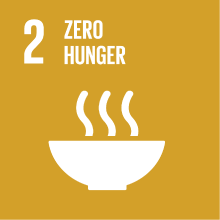THE LANGUAGE OF THE KORAN
- Academic year
- 2025/2026 Syllabus of previous years
- Official course title
- LINGUA DEL CORANO
- Course code
- LT3230 (AF:607681 AR:328266)
- Teaching language
- Italian
- Modality
- On campus classes
- ECTS credits
- 6
- Degree level
- Bachelor's Degree Programme
- Academic Discipline
- L-OR/12
- Period
- 2nd Semester
- Course year
- 3
- Where
- VENEZIA
- Moodle
- Go to Moodle page
Contribution of the course to the overall degree programme goals
The objectives of the course are to develop students’ capacity for critical reflection on the language used in the Qur'an and to equip them with foundational methodological tools for linguistic, stylistic and interpretative analysis. In addition to morphological, syntactic and general communicative aspects, the course will address the etymology of key terms from an intercultural perspective, as well as the forms of traditional recitation currently practised within the Islamic world. Achieving these objectives will enable students to lay the groundwork for a critical engagement with the Qur'an and to apply the acquired knowledge in recognising its connections with broader Arabic literature – ancient, premodern, and contemporary. Furthermore, it will prepare students to engage thoughtfully with contemporary sociological and political issues related to the transmission and understanding of a text of fundamental significance to a vast linguistic, cultural, and geographical sphere.
Expected learning outcomes
Students are expected to acquire a foundational knowledge of Qur'anic linguistic terminology; to understand the distinctive stylistic features of the Qur'an in relation to pre-Islamic poetry, as well as to subsequent prose and poetic traditions; and to become familiar with the principal Qur'anic imagery in its symbolic dimensions, including from a comparative cultural perspective.
Applying Knowledge and Understanding:
Students should be able to employ Qur'anic linguistic terminology accurately and recognise its presence and function within contemporary discourse.
Judgement and Critical Thinking:
Students should be capable of formulating and articulating basic interpretative hypotheses regarding the text, while also developing a critical approach to evaluating alternative interpretations.
Pre-requirements
Contents
- The text within the history of the Arabic language and its internal chronology: this section presents selected case studies through simple excerpts in the original language. Topics include the various canonical readings (qirāʾāt), the abrogating and abrogated verses (āyāt al-nāsikh wa al-mansūkh), the asbāb al-nuzūl or ‘occasions of revelation’, and the relationship between the Qur'anic text, the biography (sīra) of the Prophet, and key works of Arabic exegetical literature.
- Language and style: this section constitutes the core component of the course. It presents and analyses selected passages from the Qur'an through the lens of lexicology and Semitic rhetoric. Special attention is devoted to the sura known as al-Fātiḥa (The Opening), as well as the suras of The Cow (2), Joseph (12), Consultation (42), and the concluding suras, Daybreak (113) and Mankind (114).
- Major Qur'anic themes: selected prominent topics and figures from the Qur'anic text will be examined, with continuous reference to the original Arabic. The analysis will focus on the specific linguistic expressions used to convey these themes.
- The language of the Qur'an and its melodic recitation (tajwīd): this section includes listening exercises using recordings by renowned professional reciters, along with theoretical notes. Attention will also be given to contemporary national and international Qur'anic recitation competitions held across the Islamic world.
Referral texts
An Italian translation of the Qur'an, preferably the one by I. Zilio-Grandi, available at: https://unive.academia.edu/IdaZilioGrandi
Assessment methods
Type of exam
Grading scale
A. Scores in the 18-22 range will be awarded in the presence of a sufficient knowledge of Classical
Japanese grammar and a sufficient ability to analyze the given texts from a grammatical perspective
and render them in translation.
B. Scores in the 23-26 range will be awarded in the presence of a fair knowledge of Classical Japanese
grammar and a fair ability to analyze the given texts from a grammatical perspective and render
them in translation.
C. Scores in the 27-30 range will be awarded in the presence of a good or excellent knowledge of
Classical Japanese grammar and a good or excellent ability to analyze the given texts from a
grammatical perspective and render them in translation.
D. Honors will be awarded in the presence of an outstanding knowledge of Classical Japanese
grammar and an outstanding ability to analyze the given texts from a grammatical perspective and
render them in translation.
Teaching methods
2030 Agenda for Sustainable Development Goals
This subject deals with topics related to the macro-area "Poverty and inequalities" and contributes to the achievement of one or more goals of U. N. Agenda for Sustainable Development




